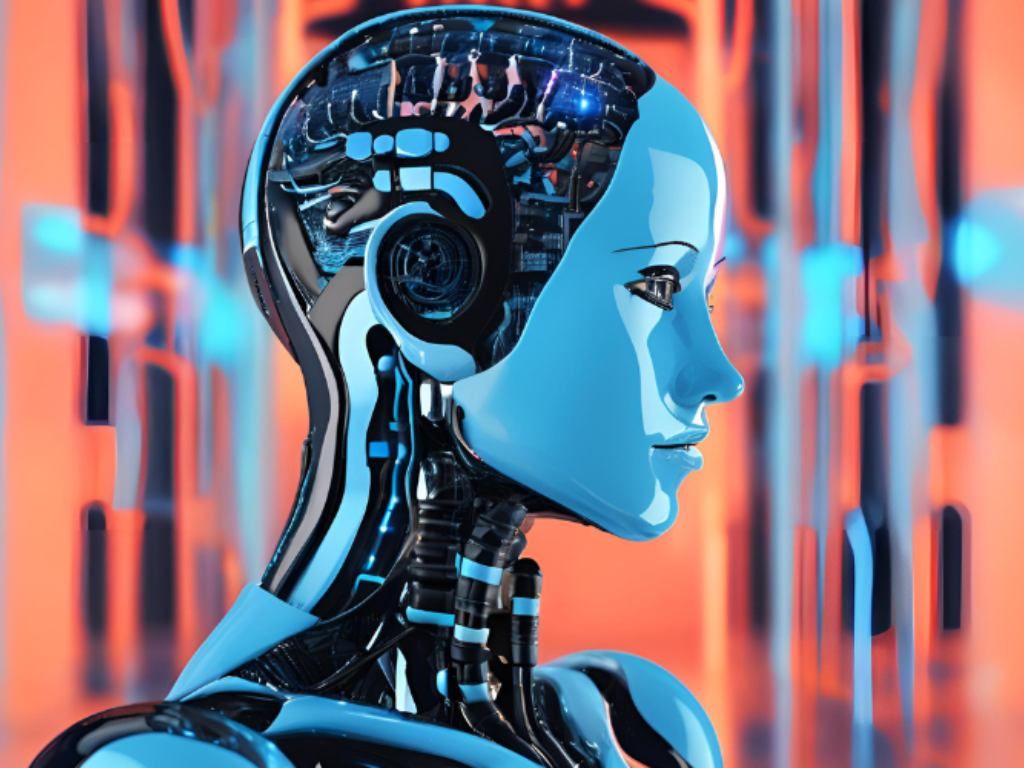The 4 Types of Artificial Intelligence: Getting to Know AI
Artificial Intelligence or AI has experienced fast growth in recent years. It has reached a phase where it is used in everyday life – people generate images from the comfort of their homes, get tailored recommendations on streaming platforms, and control home devices with virtual assistants.
Written by Luis Paradela|Posted on June 7, 2024

All of these examples are possible because of programmed algorithms and training data. We modeled AI in the same way we believe our brains work.

**We can think of AI as the powerful combination of human capacities and machine technicalities, merging in a synergy that allows us to solve issues that machines nor humans can do on their own.
The following article provides an informative approach to the four AI types and their applications in business.
Basic Concepts of Artificial Intelligence Types
AI is an extension of human capabilities, its purpose being to scale what people can do by letting machines do the time-consuming tasks. Let’s not forget that we, as humans, make the process of machine learning possible by training algorithms based on models and desired outputs.
So far, we haven´t grasped completely how human consciousness works and thus cannot replicate it. Despite this, **AI can rapidly advance in domains such as problem-solving, data analysis, natural language processing (NLP), and pattern recognition.
Nowadays, AI shapes business operations, changing how different industries work, from retail to agriculture.
The 4 Types of Artificial Intelligence
Businesses are leveraging the advantages of AI-empowered teams to tackle complex tasks and strategically focus on core processes.
Arend Hintze, a professor at Michigan State University, defined four primary types of AI. Let’s delve deeper into his insights:
1. Reactive Machines
As the name states, this kind of AI operates on mere reactive response, lacking learning or memory abilities. It’s one of the most basic forms of AI and functions within a narrow scope, relying on a fixed set of instructions to process inputs and generate outputs consistently.
Reactive machines excel at identification, prediction within predefined parameters, and the optimization of actions based on limited options.
Despite their simplicity, they find utility in scenarios requiring precise, deterministic responses. Machine Learning (ML) frequently incorporates reactive AI models, playing on their ability to process data and swiftly provide tailored recommendations within set parameters.
2. Limited Memory AI
This form of AI is more advanced than the previous one, as it incorporates a conception of the past by monitoring things over time. This functionality allows machines to “get smarter” by learning like our brains do: incorporating new information. Past and present data coexist and create the patterns AI uses to perform tasks.
The process explained before is called Deep Learning, and it’s a subset of ML involving artificial neural networks with many layers that analyze and learn from a large amount of data.
Some of these algorithms’ applications include:
- Image and video recognition - even in the medical field
- NLP for chatbots
- Autonomous vehicles
The previously mentioned types of AI already exist and operate in the real world. However, the next two categories are more predictions of what we could achieve in the future.
3. Theory of Mind AI
Theory of Mind AI refers to a concept in psychology that involves understanding how thoughts and emotions influence human behavior and responding accordingly.
If this kind of AI is ever developed, it will be able to replicate fundamental aspects of human society. It will understand how others feel, their motives, and intentions, and provide outputs aligned with that understanding.
4. Self-Aware AI
This ambitious category of AI entails machines forming representations of themselves and recognizing their own existence. Achieving this would necessitate Theory of Mind AI, as it would require the ability to process emotions and understand their origins to make inferences about them.
Benefits of Using AI Technology in Your Business
AI is permeating nearly every industry, enabling us to achieve results faster than ever before while enhancing accuracy, increasing productivity, and driving innovation.
Examples include:
- In healthcare, AI supports patient monitoring and analyzes medical images.
- In finance, it can detect fraudulent activities and assess risks and market trends.
- In retail, AI provides personalized recommendations based on customer behavior.
- In human resources, it tailors training programs and assists in the recruiting process by scanning potential candidates.
At AccelOne, we specialize in the latter field, providing staff augmentation services and AI-powered teams. We leverage cutting-edge technology overseen by highly skilled human professionals to unlock AI's full potential.
What Is the Most Common Type of AI Used Today?
The most prevalent type of AI utilized today is AGI (Artificial General Intelligence). These systems possess autonomous self-control, a certain level of self-awareness, and the ability to learn new skills.
Unlike Machine Learning, which operates within defined tasks and often requires manual parameter definition, AGI can autonomously learn and tackle more intricate problems.
A popular example of AGI is ChatGPT, the online AI-powered tool used for natural language understanding and generation.
Build your Digital Transformation with AI
Integrating AI into your workplace is the best way to reach out to us to drive your digital transformation.
Create a powerful synergy between your workforce and machines, revolutionizing your operational processes. Find in AccelOne a trusted partner to develop an AI-centered strategy to stay relevant and competitive in the market.
Together, let's forge a promising future for your business.

Luis Paradela
Chief Development Officer
Co-Founder
Buenos Aires
View profile